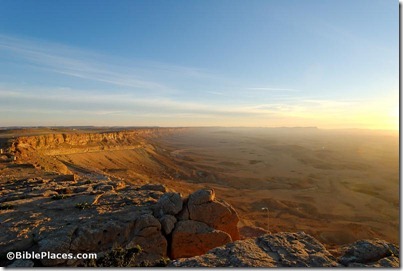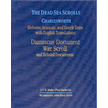On Monday, the “Dead Sea Scrolls & the Bible” exhibit opens at Southwestern Baptist Theological Seminary in Fort Worth. I confess having a jaundiced view towards such American exhibits because they typically charge a high price for a glimpse at a handful of scraps of ancient writing. This display appears to be different, offering a wealth of materials as well as 22 manuscript fragments. This week’s article in the Baptist Press convinced me to plan to spend a day at the exhibit. Some excerpts:
Southwestern Baptist Theological Seminary hopes to … give more people than ever a chance to see manuscripts that reveal the faithful transmission of the biblical texts over thousands of years through its Dead Sea Scrolls & the Bible exhibition, which will run from July 2012 to January 2013….
Weston Fields, guest curator for the Dead Sea Scrolls & the Bible exhibition and executive director of the Dead Sea Scrolls Foundation, said that while the ancient scroll fragments do not “prove” the Bible is true, they prove, more or less, that the Bible Christians use today, including 66 books from Genesis to Revelation, is the Bible God intended Christians to have, even thousands of years after He first inspired its writing….
Owning more Dead Sea Scroll fragments than any institution of higher education in North America, Southwestern plans to showcase seven of its fragments together with others on loan from the Kando family of Bethlehem, Hebrew University, and the Department of Antiquities of Jordan, for a total of 22 manuscript fragments in the exhibit.
The exhibit also will contain archaeological artifacts, early copies of Scripture, and equipment used in excavations, including the Jeselsohn Dead Sea Stone, or “Gabriel’s Vision”; the first published Greek New Testament; a page of the Gutenberg Bible; the Luther Bible; New Testament papyri; and tools from the excavation of Qumran, as well as a nearly 16-foot-long display of a portion of the St. John’s Bible.
[…]
McCoy said the exhibition will offer a child-friendly component as well, where young visitors can experience the archaeological aspects of the Dead Sea Scrolls and learn about them alongside their parents, both through kiosks placed throughout the exhibit and through a simulated dig site located outside the exhibit hall.
At the dig site, visitors will have the chance to excavate and dig for ancient artifacts. A child may then take home a shard discovered in his digging.
And a bullet list, for those who prefer the short version:
In The Exhibit:
— Murals of Dead Sea region
— Artifacts such as coins, pottery and sandals
— Replica Wailing Wall
— Authentic Bedouin tent
— Tent from Qumran dig site
— Scroll stylus and ink well
— Replica of Cave 4
— Dead Sea Scroll fragments and other manuscripts
— Dead Sea Scrolls film
— iScroll kiosks
— Portion of St. John’s Bible
— Early Bibles and texts
— Gift shop
— Interactive dig site
The story includes two free high-resolution photos. The official website is here. A few weeks ago I noted the excellent lecture series. In 2010 Southwestern purchased some of the Dead Sea Scroll fragments that will be on display.
-buy this photo and 1,547 others for $40-





